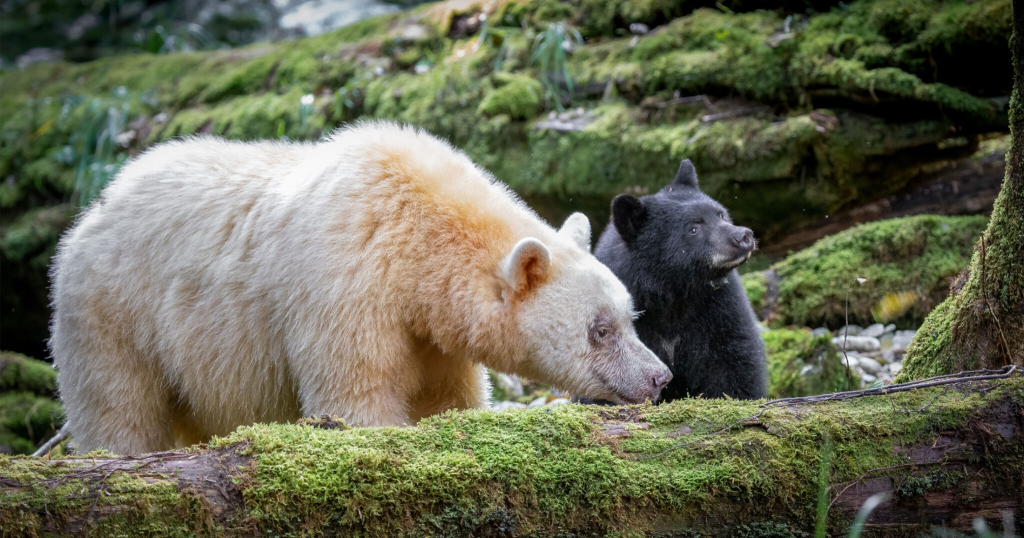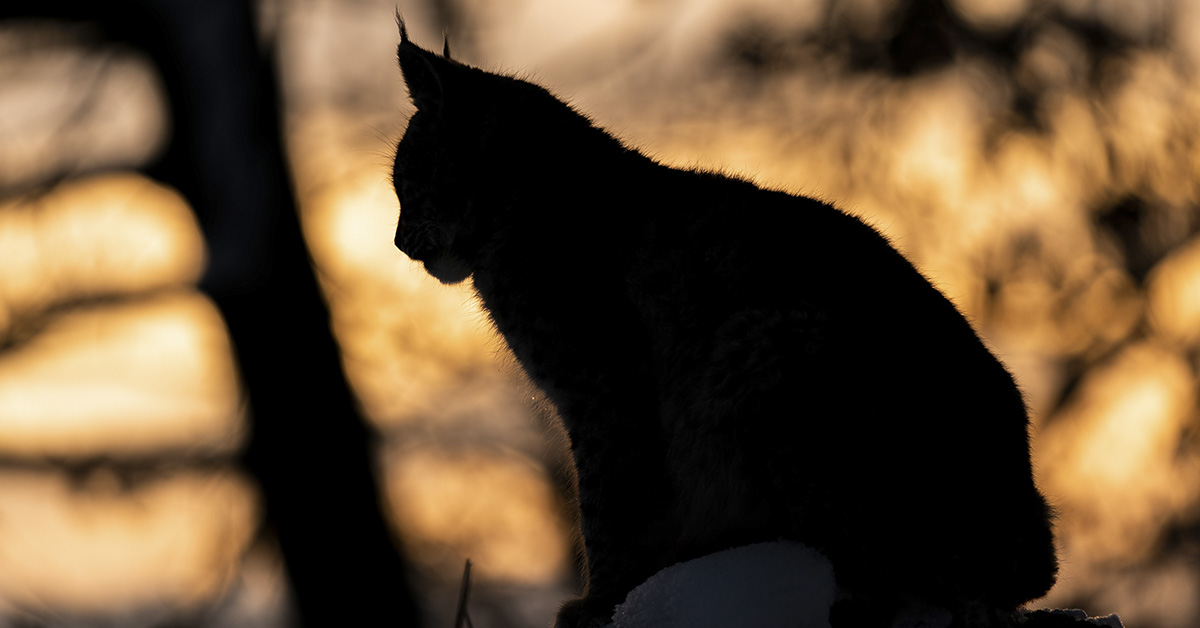A huge discovery was made when a researcher from the University of Alberta in Canada captured a photograph of a black-coated Canada lynx. Thomas Jung, who is also affiliated with the Government of Yukon, managed to record a 30-second video of this remarkable animal using his cell phone.
The findings of this unique encounter have been documented. These recordings were placed in an article titled “Paint it black: first record of melanism in Canada lynx (Lynx canadensis),” published in the journal Mammalia. the lynx was spotted in a rural residential area near the town of Whitehorse, Yukon.

This region features low-density housing interwoven within mature forests mostly home to white spruce trees. From a distance of approximately 160 feet, observers were able to witness the lynx’s presence. And it appeared relatively calm and undisturbed by the nearby presence of people and a dog. Until eventually leaving the area, possibly in response to the dog’s barking.
Read: Pink Meanies, A New Species Of Jellyfish With 70-Foot Tentacles, Washing Up In Florida And Alabama
The footage of the Black Canada Lynx has undergone scrutiny by multiple experts in the field. They have verified the animal’s identification as a lynx
Despite the low-resolution images, certain obvious characteristics could be seen. Thomas Jung notes, “It had a black coat with whitish gray guard hairs scattered throughout. As well as whitish-gray hairs in the facial ruff, rostrum, and dorsal regions.” While the lack of a detailed examination is unfortunate due to the image quality, these minor features could still be detected and worked through to determine the Lynx’s viability.
The Canada Lynx has evolved to fit in perfectly in its surroundings, going almost unnoticed by prey
The coat color within the Lynx genus is known for its stability. Exhibiting minimal differences within species when compared to other members of the cat family (Felidae). In the case of the Canada lynx, their typical coat color follows a similar pattern. During winter, they tend to have silvery grayish coats, which shed to reddish brown in the summer months.
Read: In Alabama, rare 400-pound spotted eagle ray jumps into boat, gives birth
However, it’s worth noting that the summer coat may also include dark spots and the presence of black hairs on the tips of their tails and ears. Adding to their distinctive appearance. This characteristic coat color is a notable feature of the Canada lynx species.
The discovery of melanism in Lynx canadensis, as seen in this recorded sighting, is not only significant due to its novelty but also because it represents a rare occurrence of coat color variation within the Lynx genus. This sighting could spark further investigation into the Black Canada Lynx.
What does coat color have to do with it all and why does it sometimes pose as a disadvantage?
In contrast to the relatively limited coat color variations found within the Lynx genus, other mammals exhibit broader ranges of color. One example is the cream-colored variation of the black bear known as the “Spirit Bear” found along the coast of British Columbia.

These changes in color can often offer benefits such as temperature regulation or good camouflage. For instance, black bears in the Yukon region are often tan or cinnamon-colored. Enabling them to blend well with the sparse forests in the area. The suitability of color depends on what works best within the specific habitat, as noted by Jung.
Melanism: A genetic factor that plays a big role
The phenomenon known as “melanism” arises from a genetic mutation that leads to the overproduction of melanin. A dark-colored pigment. This excess melanin results in individuals displaying a dark coat color. In the case of big cats, such as those found in humid tropical regions, this melanism can potentially enhance their camouflage within the lush jungle environment.
Through Jung’s review of literature, it was discovered that accounts of black ground squirrels observed in burned areas of boreal forests. As well as similar occurrences with bobcats in New Brunswick, suggest that melanism allows individuals to blend in with charred timber. Providing them with a form of camouflage.
Regarding melanism in lynx species, researchers have yet to determine whether it confers adaptive or maladaptive traits. However, Jung suggests that the loss of camouflage exhibited by the black Canada Lynx when hunting in snowy environments is likely to be maladaptive. He speculates that the darker coat color may put the animal at a significant disadvantage while hunting hares during the winter season.
Keep Reading: Do animals have feelings? This baby elephant cried for 5 hours after his mother rejected him
Sources
- “Black Canada lynx photographed for the first time.” Phys Org. De Gruyter. October 28, 2022
- “The story behind the black lynx that went viral.” Cottage Life. Conor Mihell. October 31, 2022

